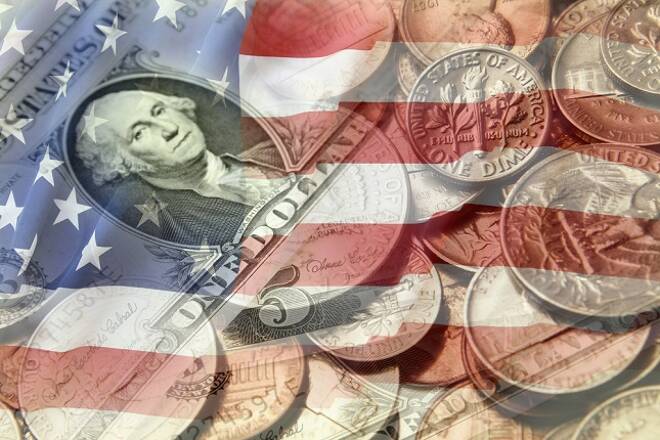Advertisement
Advertisement
Currencies Finish Mixed Amid Confusion Over Trade War Impact
By:
Although China’s decision to impose tariffs on 106 U.S. products grabbed the headlines early Wednesday, the U.S. did release several economic reports. ADP and Moody’s Analytics reported that companies kept up the hiring pace in March, adding 241,000 positions as employment in construction and manufacturing surged.
The U.S. Dollar finished mixed against a basket of major currencies on Wednesday as Forex traders had a difficult time deciding how to play the trade war game. The price action suggests investor indecision with export-linked currencies reacting one way and safe-haven currencies the other. Since the index is heavily weighted by the Euro, its price action essentially controlled the movement in the index.
June U.S. Dollar Index futures settled at 89.783, down 0.076 or -0.08%.
The two-sided price action was fueled by some traders betting the Trump Administration’s tariffs on Chinese goods and Beijing’s response would damage the U.S. Dollar while other remained confident the tit-for-tat responses could be controlled.
Essentially, the price action indicates a lack of consensus in the markets about how a potential trade war will impact the U.S. and global economies.
U.S. Economic Reports
Although China’s decision to impose tariffs on 106 U.S. products grabbed the headlines early Wednesday, the U.S. did release several economic reports.
ADP and Moody’s Analytics reported that companies kept up the hiring pace in March, adding 241,000 positions as employment in construction and manufacturing surged. Traders were looking for the report to show that private payrolls grew by 205,000. The March report was also revised higher to 246,000, up from 244,000.
Another report showed growth in non-manufacturing economic activity continued to slow in March, after declining slightly in the prior month.
The Institute of Supply Management’s measure of non-manufacturing firms ticked down to 58.8, slightly lower than the 59 expected by economists. Non-manufacturing economic activity hit 59.5 in February.
Additionally, the Commerce Department said on Tuesday that factory goods orders increased 1.2 percent, nearly erasing January’s revised 1.3 percent decline. Economists were looking for a 1.7 percent rise in February after a previously reported 1.4 percent drop in January.
Finally, Cleveland Fed President Loretta Mester said the U.S. Federal Reserve makes better policy decisions when a more diverse group is at the table helping it avoid “group-think”. Mester did not comment on U.S. monetary policy in prepared remarks on diversity in the economics profession.
Gold
Gold futures finished slightly higher on Wednesday after giving up most of its earlier gains, following a test of a one-week high. The price action reflected the confusion in the Forex markets as to how to play a possible trade war between China and the United States.
Gold traders were also impacted by a volatile two-sided trade in the U.S. stock market. At first, gold was supported by flight-to-safety buying linked to a steep break in stocks in reaction to China’s decision to impose tariffs on U.S. goods. A strong comeback in equities and a higher close encouraged gold traders to take profits and move money back to higher-risk assets.
Crude Oil
U.S. West Texas Intermediate and international-benchmark Brent crude oil futures finished slightly lower on Wednesday in a volatile trading session. Early in the session, prices plunged after China proposed a broad range of tariffs on U.S. goods that increased fears of a trade war.
Prices began to mount a comeback after the Energy Information Administration released data showing U.S. crude inventories fell by 4.6 million barrels in the week-ended March 30. Analysts were expecting an increase of 246,000 barrels.
The market was also helped by a turnaround in the U.S. stock market.
About the Author
James Hyerczykauthor
James Hyerczyk is a U.S. based seasoned technical analyst and educator with over 40 years of experience in market analysis and trading, specializing in chart patterns and price movement. He is the author of two books on technical analysis and has a background in both futures and stock markets.
Did you find this article useful?
Latest news and analysis
Advertisement
